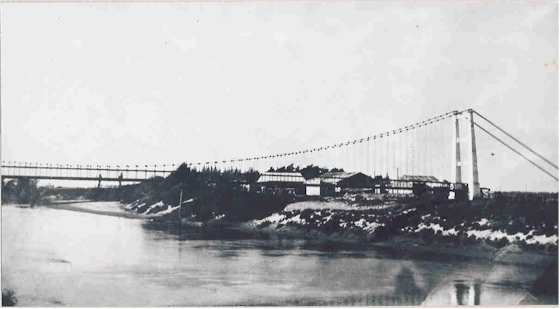
Opiki Toll Bridge
A History
Early
Years
Early Years
The opening of the bridge in January 1918 was a great day for many mill workers, because it gave them easy access across the river. No more hazardous crossings by the winch-driven flying fox platform, or the alternative long journey to the Linton Railway Station. The bridge would now save hours of time, enabling millers to transport flax fibre across the Manawatu River – quickly, safely and easily – to the nearby Rangiotu Railway Station.
Unfortunately, not long after the opening of the bridge came the end of the Opiki flax-milling industry, brought about by economic and biological reasons. After the war-time boom of the industry during World War 1, the market crashed badly. By May 1919, prices had dropped dramatically, with flax-millers unable to sell their fibre for more then £28 per ton, compared to peak prices of £70 per ton.
Also contributing to the price drops was the 'yellow leaf' disease that began to break out as early as 1916. By 1921 half the flax plants in the swamp (7,000 acres) had been affected, and all the flax mills had closed down. The Tane Hemp Company Ltd went into voluntary liquidation in September 1922. Hugh Akers, one of the eight shareholders in the company, bought up the shares of the other seven shareholders and so assumed full responsibility for the bridge.

The Tane bridge shortly after its opening in January 1918. The 'river' mill can be seen in the background.
Next: "Toll Bridge"
Previous: "Bridge Construction"
Last update: Monday, September 15, 2003 at 2:48:13 PM.